Over 40? These 4 Exercises Are a Must for Muscle Maintenance
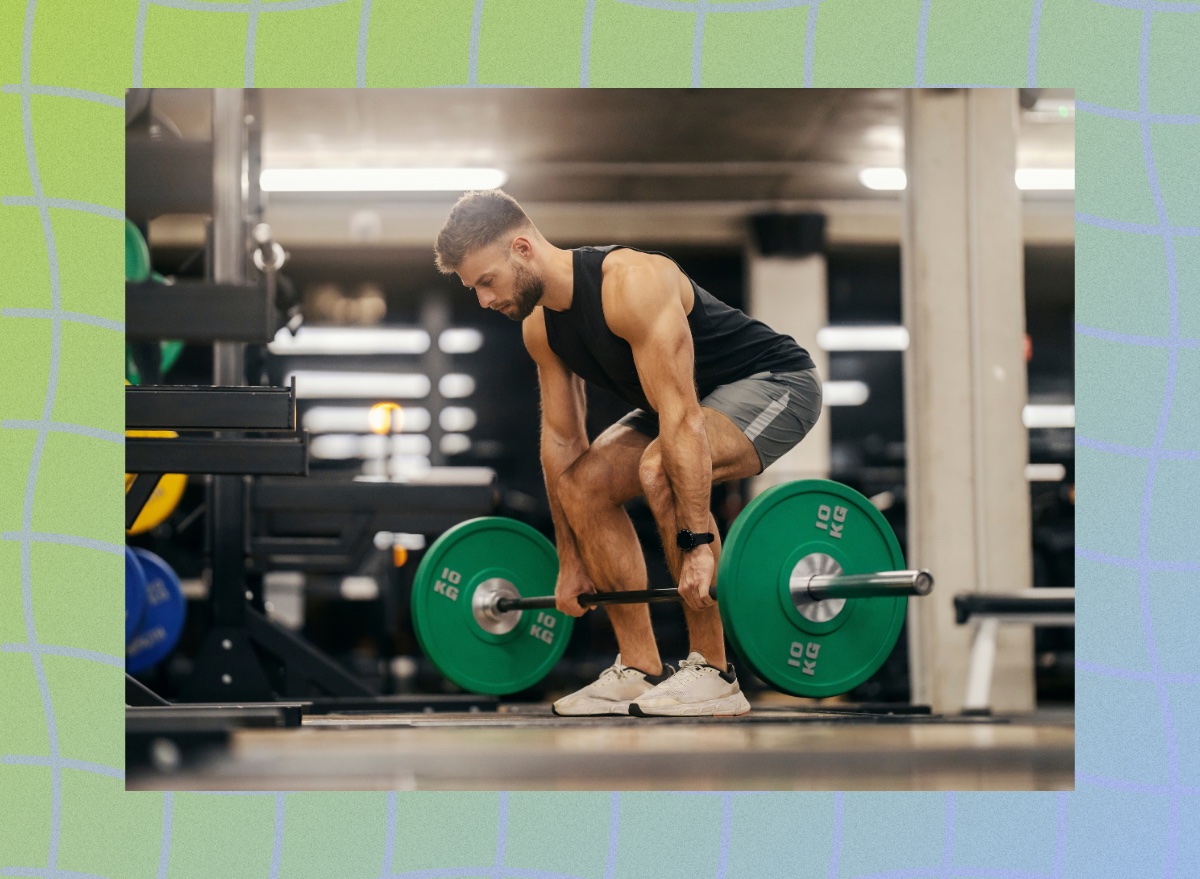
Muscle mass naturally declines as you age, but you don’t have to accept weakness or the thought of muscle disappearing as a given. Once you hit your 40s, strength training becomes essential. You need to fight muscle loss with consistency and smart training. The goal isn’t just to build muscle. It’s to keep it. Strong muscles protect your joints, improve your posture, and make everyday movements easier.
To maintain muscle, your training needs to prioritize compound lifts. These multi-joint exercises recruit several muscles at once, which means more efficiency, strength, and muscle-building potential in every rep. Forget chasing endless isolation exercises. Compound lifts deliver the biggest return on your time and effort.
In this article, you’ll find four powerful movements that every lifter over 40 should prioritize. These exercises target your entire body, build real strength, and help preserve muscle mass long term. Let’s get into it.
Exercise: Lunges
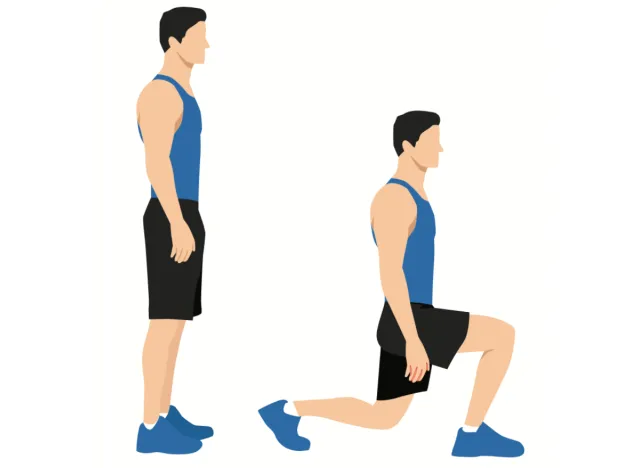
Lunges are a powerhouse for leg strength and stability. They target your quads, glutes, and hamstrings while engaging your core for balance. Unlike machines, lunges force you to stabilize your body in space. This creates better functional strength and athletic control. They also build single-leg strength, which helps prevent imbalances and reduces your injury risk.
How to Do It
- Stand tall with your feet hip-width apart and your hands at your sides.
- Step forward with your right foot and lower your body until both knees form 90-degree angles.
- Keep your front heel flat and your back knee just above the ground.
- Push through your front heel to return to the starting position.
- Repeat on the left leg. Alternate sides each rep.
Recommended Sets and Reps: Perform 3 sets of 8 to 10 reps per leg. Rest for 60 to 90 seconds between sets.
Best Variations
- Walking lunges
- Reverse lunges
- Lateral lunges
- Bulgarian split squats
- Curtsy lunges
Pro Tip: Keep your torso upright and avoid leaning forward. This protects your spine and shifts the load to your legs where it belongs.
Exercise: Dumbbell Rows
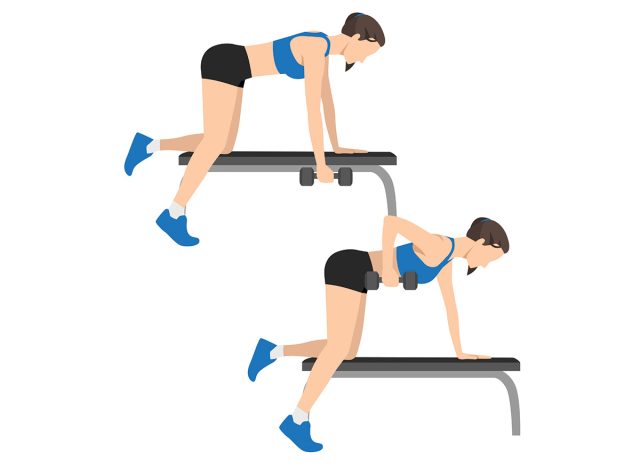
Dumbbell rows are one of the best exercises for upper back strength. They target your lats, rhomboids, and traps while working your biceps and rear delts. Strong rows help correct poor posture and balance out pressing movements. They also train your core through anti-rotation stability, primarily when performed one arm at a time.
How to Do It
- Hold a dumbbell in your right hand and hinge at the hips while keeping your back flat.
- Place your left hand on a bench or sturdy surface for support.
- Let the dumbbell hang straight down from your shoulder.
- Pull the dumbbell toward your waist while keeping your elbow close to your body.
- Squeeze your shoulder blades at the top, then lower the weight with control.
- Complete all reps on one side before switching.
Recommended Sets and Reps: Perform 3 to 4 sets of 10 to 12 reps per arm. Rest for 60 seconds between sets.
Best Variations
- Two-arm dumbbell rows
- Chest-supported rows
- Bird-dog Rows
- Renegade rows
- Meadows rows
Pro Tip: Drive the movement with your elbow, not your hand. This helps you more effectively target the back muscles and keeps the tension where you want it.
Exercise: Deadlifts
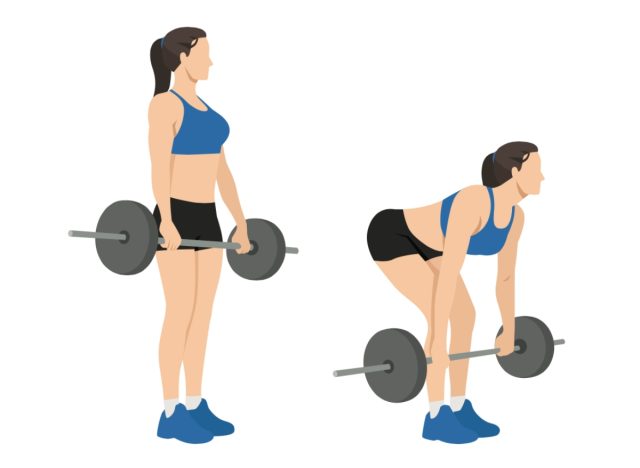
The deadlift is the ultimate full-body movement. It targets your glutes, hamstrings, lats, traps, and core. It builds raw strength and improves posture, grip, and power. This lift teaches proper hip hinge mechanics, which transfers to everything from picking up groceries to protecting your lower back. If you want a single exercise that does it all, this is it.
How to Do It
- Stand with your feet hip-width apart and the barbell over your midfoot.
- Hinge at your hips and bend your knees to grip the bar just outside your legs.
- Keep your chest up, back flat, and eyes forward.
- Drive through your heels and extend your hips and knees to lift the bar.
- Stand tall at the top with your shoulders back and your core tight.
- Reverse the motion with control to lower the bar to the ground.
Recommended Sets and Reps: Perform 3 to 5 sets of 5 to 8 reps. Rest for 90 to 120 seconds between sets.
Best Variations
- Trap bar deadlift
- Romanian deadlift
- Sumo deadlift
- Dumbbell deadlift
- Deficit deadlift
Pro Tip: Don’t rip the bar off the floor. Pull the slack out of the bar first, then push the ground away to initiate the lift with control and power.
Exercise: Incline Bench Press
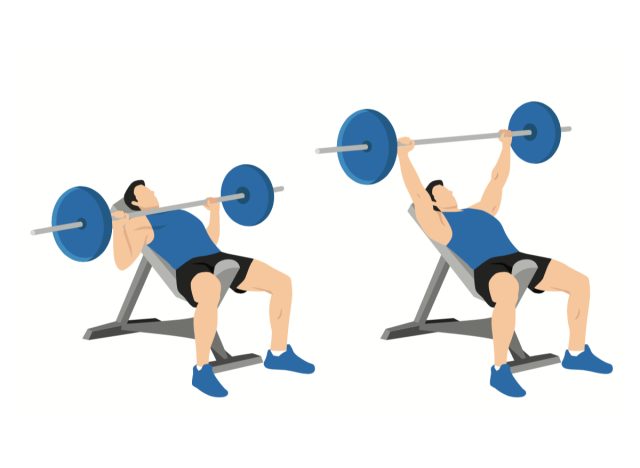
The incline bench press targets your upper chest, shoulders, and triceps. It builds strength in a pressing pattern, translating to real-life movement and upper body muscle retention. The incline also places less stress on your shoulders than a flat bench, which is a significant win if you’re over 40 and dealing with achy joints.
How to Do It
- Set the bench to a 30 to 45-degree angle.
- Lie back and grip the bar slightly wider than shoulder-width.
- Unrack the bar and hold it above your chest with your arms straight.
- Lower the bar to your upper chest under control.
- Press the bar back up to the starting position.
Recommended Sets and Reps: Perform 3 to 4 sets of 6 to 10 reps. Rest for 60 to 90 seconds between sets.
Best Variations
- Dumbbell incline press
- Incline machine press
- Incline neutral-grip press
- Incline kettlebell press
Pro Tip: Drive your feet into the ground and pinch your shoulder blades together to create a stable base. This will boost your power and protect your shoulders.